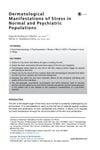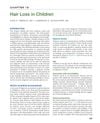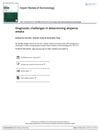Clinical Pathological Observations and Animal Experimental Study of Trichotillomania Patients
January 1999
in “
대한피부과학회지
”
TLDR Trichotillomania is more common in young females and often linked to stress and psychiatric conditions, with hair loss and increased catagen hair observed.
In a retrospective study conducted from 1988 to 1997 at the Department of Dermatology in Pusan National University Hospital, 20 cases of trichotillomania were examined. Trichotillomania, a condition where patients repeatedly manipulate their hair leading to incomplete alopecia, was found to be more common in females (60%) and individuals between 7 and 18 years old (75%). The most common initial site of hair loss was the parietal region (55%). Some patients reported pruritus (25%), chronic headache (10%), and had habits like onychophagia (20%), trichophagia (5%), and thumb sucking (5%). Many patients (70%) denied a history of hair-plucking. Psychiatric consultation revealed conditions like obsessive disorder (33%), social phobia (17%), and dysmorphic disorder (8%). The most common triggering factor was school-related mental stress (25%). Histopathological examination showed empty hair follicles without perifollicular infiltration (100%) and increased catagen hair (90%). An experiment on rabbits showed similar findings after hair plucking, with all hair follicles changing into catagen and telogen stage simultaneously and new hair growth observed.




